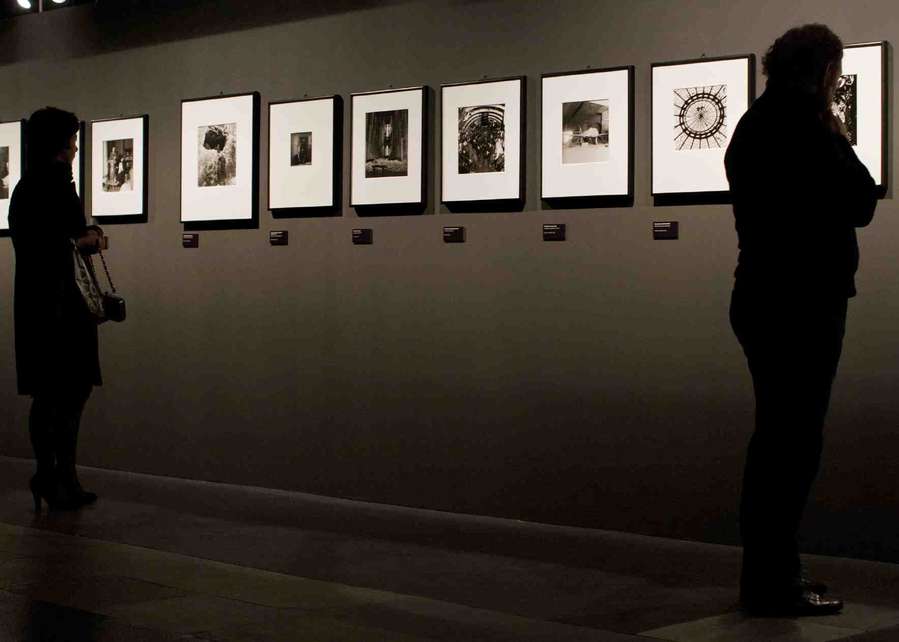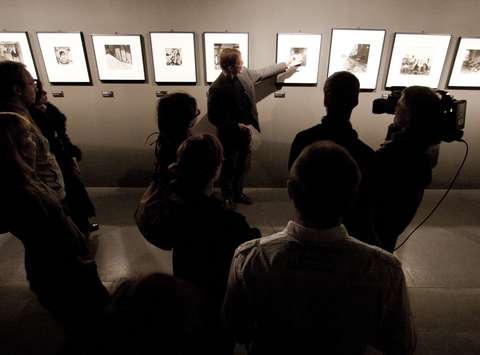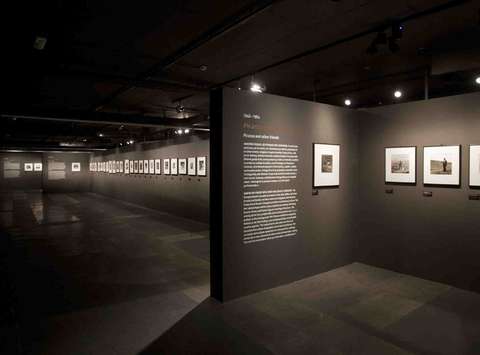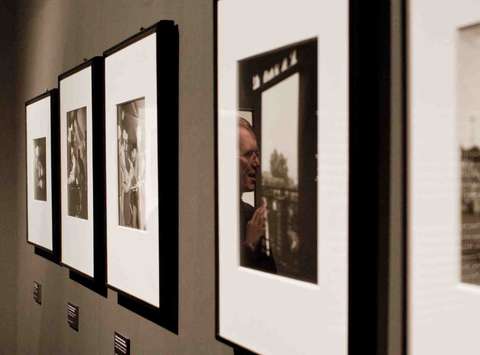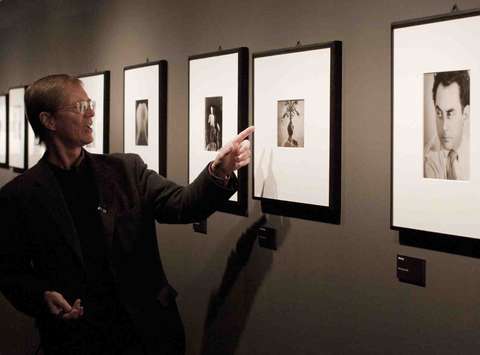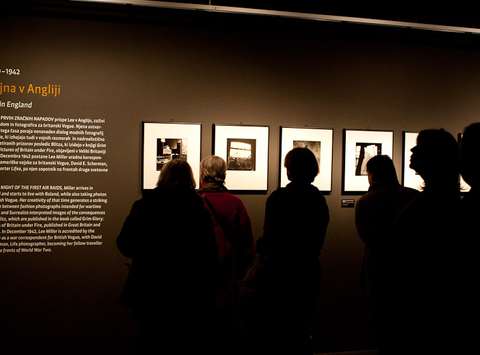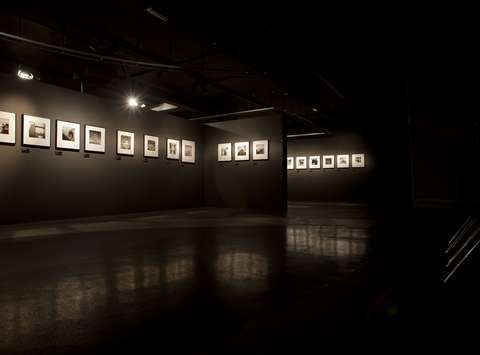LEGENDARY LEE MILLER
The photographer Lee Miller (1907–1977) began her career as a muse and a collaborator of the Surrealist photographer Man Ray in Paris. Her photographs have earned her a key place in the history of art. "Legendary Lee Miller", the retrospective exhibition of 96 Lee's original photographs presents the chronological overwiev of her artistic developement.
Lee Miller was born in Poughkeepsie, New York and started her career as a top model for the American fashion magazines Vogue and Vanity Fair. In 1929 she travelled to Paris where she became a pupil, model, collaborator and lover of Man Ray. Together they pioneered the photographic technique of solarisation; through additional exposure of glass plate negatives, soft black outlines are contoured around the light areas, giving the photograph its strange three-dimensional appearance. Miller became a photographer with her own studio in Montparnasse. Despite the truly remarkable co-operation between the two artists, their relationship became fraught with difficulties and therefore in 1932 Miller returned to USA, opening a studio in New York. Two years later she married Aziz Eloui Bey and moved to Cairo. Equipped with her camera, she set out to discover the various scenes of the Egyptian desert. When travelling to France in 1937 she met Picasso; their friendship began during a charming summer holiday on Côte d'Azur and lasted until Picasso's death in 1973. Picasso painted six portraits of Lee Miller and she, in turn, photographed him over 1,000 times. She also met her later husband Roland Penrose (1900-1984), a Surrealist artist best known as a biographer of Pablo Picasso, Joan Miró, Man Ray, Antoni Tàpies and a friend of Max Ernst and Paul Eluard. The couple cherished their strong artistic and friendly bonds with the most famous artists of the 20th century. For Miller, the time of World War Two was one of the most deeply distressing experiences in both personal and creative terms. As a war correspondent for Vogue she joined the US Army on the battlefield – this period features images of the consequences of the air raids on London, the shocking images of concentration camp prisoners, women and children caught up in the war, alternating with images of the Liberation of Paris and portraits of her artistic friends. These clearly show that, while the war took many things away from them, it simply could not break their creative spirit. After 1947, when her son Antony was born, and scarred by her traumatic experiences, Miller established herself together with Roland in Farley Farm House in East Sussex where she lived her final and less restless years of her life. She still occasionally wrote for Vogue and made portraits of artists for Roland's biographies, but her true passion was cooking and inviting friends to Farley Farm House. After she died in 1977, Farley Farm House gave shelter to her legacy which is kept and studied by the Lee Miller Archives, which is also the source of the exhibited photographs.
Not only is Lee Miller’s formal contribution of considerable importance in terms of the photography of Surrealism – which chiefly found an expression in other trends in the fine arts and which in this medium was crucially influenced by her most important fellow artist Man Ray – but so too is the stance taken by her as a female artist. Through both her work and life she managed to relativise – better than any feminist theory could do – the principle of reducing a female figure to the level of an impersonal object whose identity is taken away by a surrealist artist who thereby, in truth, perhaps only expressed his unconscious desire.
The adoption of the surrealist concept of object trouvé, which was so intensely dealt with by the surrealists, within her own manner of creating, observing and isolating images from the landscape of everyday life by using her camera and thereby of finding an image trouvé accounts for one of the most specific features of Miller's photography, which was complemented by a superb command of photographic technique. This idea is best seen in her early work Exploding Hand (1930), a framed everyday detail of a glass door of the Guerlain perfumerie in Paris which had been scratched by the numerous diamonds on the rings worn by the many customers turning the door handle. The scratches thus seem to transform into the smoke of a tiny explosion in which a hand is caught at the moment of a common movement, an image to which new life is granted by the camera lens.
Frequently mysterious, sometimes threatening, often abstract images with no common denominator, simply moments stolen from time and space. When we put them together again, we go back to the principles of coincidence, the non-plannedness and rejection of conventional forms – to the principles of Surrealism. Their originality is derived from the refined senses of the Muse who was able, by way of her internalised aesthetics, to immortalise the images of the everyday, and even shocking world. This explicit quality of her creativity was even applied to portrait photography – her sitters, regardless of who they are, are always shown with their straightforward human dignity and personal stance. Miller, whose character was far from transparent, also had a dark side to her personality; therefore her reactions were often incomprehensible to others. After one has seen her photographs, one wonders why both the artist herself and the work of one of the icons of world photography have remained unrecognised and radically undervalued for so many years. It was as late as until after Miller's death, when her son Antony Penrose started to become intensely engaged in the oeuvre consisting of over 40,000 prints, that Miller's work started to enjoy the well-deserved respect. It is extraordinary that Ljubljana's Jakopič Gallery can, along with other artistic sites around the world, also become part of this story which is opening up new perspectives in the development of fine art photography of the 20th century.
The exhibition, which caused unprecedented public interest in all the places where it traveled to so far, is accompanied with the documentary film entitled The Lives of Lee Miller.
—Marija Skočir
Colophon
Production: Museum and Galleries of Ljubljana
In cooperation with: Lee Miller Archives; Photonic Moments – Month of Photography 2010; British Council, Slovenia
Curator: Marija Skočir
Expertise help: Antony Penrose
Conservation expertise: Katarina Toman Kracina
Exhibition and graphic design: Bojan Lazarevič (Agora Design)
Coordination for Lee Miller Archives: Ami Bouhassane
Exhibition realization: Jože RPS d.o.o., Strle Svetila, Jože Kovačič
Location
Slovenska cesta 9
1000 Ljubljana
T +386 1 42 54 096
T +386 1 24 12 500
E galerija.jakopic@mgml.si
Opening hours
Tuesday–Sunday: 10 a.m.-6 p.m.
Monday: Closed
1 January, 1 November, 25 December: Closed
24 and 31 December: 10. a.m.-2 p.m.
Tickets
Adults: 5 €
Students, people over the age of 60, unemployed, people with disabilities: 3 €
Family ticket: 12 €
ICOM, PRESS, SMD, students of the Academy of Fine Arts and Design, VIST – Higher School of Applied Sciences, Faculty of Natural Sciences and Engineering – OTGO, Faculty of Design: Admission free
Guided tours of the exhibition: every Saturday at 4.30 p.m. (included in the admission fee)
Join the Friends of the Jakopič Gallery. The € 12 annual membership fee includes numerous benefits and exclusive events. Click here for more information.
